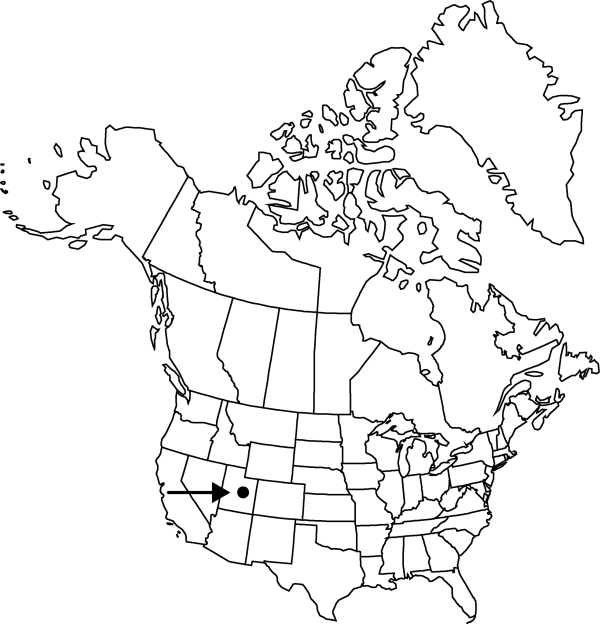Sclerocactus wrightiae
Cact. Succ. J. (Los Angeles) 38: 55, figs. 5, 6. 1966.
Stems usually unbranched, usually pale green, depressed-spheric, spheric or short cylindric, (1–)4–8(–11) × 4–8 cm; ribs 13–16, tubercles often evident on ribs. Spines slightly or not obscuring stem; radial spines 5–10(–14) per areole, pale to white, 6–17(–20) mm; central spines (3–)4 per areole, terete to angled; abaxial central spine 1 per areole, white to tan with tan to black tips, hooked, 10–30(–44) × 0.5–1 mm; lateral adaxial spines 2 per areole, white or brown to reddish brown or black, 10–21(–35) × 0.8–1.5 mm; adaxial central spine white, flat to angled, 6–27(–35) × 5–15 mm. Flowers fragrant, funnelform to campanulate, sometimes narrowly so, (2–)3–4 × 2–4 cm; outer tepals with reddish brown midstripes and white to cream or pinkish margins, oblanceolate, 13–23 × 3–7 mm; inner tepals white to cream or pink, oblanceolate, 25–30 × 5–7 mm; filaments magenta; anthers yellow. Fruits irregularly dehiscent, ovoid, barrel-shaped, 9–15 × 7–12 mm, scales few or absent; ovary papillate, appearing granular. Seeds black, 2 × 3.5 mm, testa with rounded papillae.
Phenology: Flowering late Apr–May.
Habitat: Exposed, highly alkaline, often bare clay hills, desert grasslands or saltbush flats
Elevation: 1300-1800 m
Discussion
Of conservation concern.
Sclerocactus wrightiae displays considerable morphologic variation, presumably due to introgression with S. parviflorus; however, it can usually be recognized by its noticeably fragrant flowers with pink to white tepals, and magenta staminal filaments. Although S. wrightiae generally has smaller stems and flowers and shorter spines than S. parviflorus, there are many exceptions.
Sclerocactus wrightiae is known to occur only near the Fremont River and San Rafael Swell in Utah. Exploitation by cactus collectors is partly responsible for its scarcity.
Sclerocactus wrightiae is in the Center for Plant Conservation’s National Collection of Endangered Plants.
Selected References
None.
